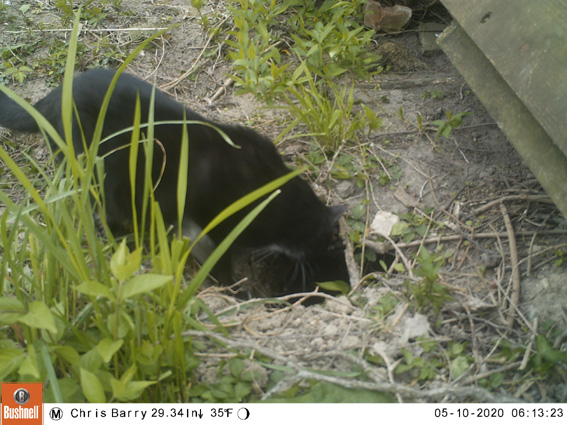Look closely at the winged creatures around us and you’ll see many have extraordinarily athletic abilities, some of which we are trying very hard to copy with the latest mechanical drones. Did you see the amazing formation flying, amid the regular fireworks, of lights carried by perhaps more than a hundred drones at President-Elect Biden’s victory speech on Nov 7?
Last season’s Eagle nest, nearly ½ mile away to the North on Audubon Island, is gone. It was good for at least two years and two sets of young birds, but now it is nowhere to be seen. We last saw it on May 1st when the leaves opened and hid it, with the two young ones who were almost ready to fly, from our view:
The tree is bare now in November and with the summer leaves fallen we can see that the nest has gone without a trace.
To our great good luck the parents seem to have decided to give Garden Island, just 150 yards away, another try. An effort there 2 or 3 years ago failed miserably.
This time, in just one month, they’ve built a nest up from nothing. Seems that one (the male?) collects a branch in less than 5 mins and brings it back. The other (the female?) then repositions it, while he’s gone looking for another stick. (Everyone know that men can’t properly load a dishwasher!).
The eagle prefers branches directly from a tree. (A few years ago I temptingly laid out a dozen good branches on the river bank and none were taken by any nest builders.) Occasionally the bird clasps a tree branch which won’t break off and he is left dangling precariously, upside-down. I was lucky enough to have the camera (iPhone) running when he came to the walnut tree right outside. Look carefully and you’ll see the eagle first snaps off a twig. Could it have been testing the wood to see if it was brittle enough to break easily? If so, then the answer was ‘yes’ – he jumped onto and grasped the branch which broke under his 10 to 14 lb. weight, dropped, spread his wings and flew back to the nest.
The new nest is holding up well even though there was a 37 mph wind this week:
Other very fine fliers are the Big Brown Bats. Twice this summer they crept into the house through a very small hole under the balcony screen door. Alice and Pinot quickly tell us we have an early morning visitor:
I close all doors but one, leaving a rectangular loop for their flight: down the corridor, through the bedroom, and into the other end of the corridor. At one end of corridor the balcony door is open, but at that point they are turning on their circuit. No combination of indoor and outdoor lights on and off will induce them to turn the other way and leave.
Alice watches it fly round and round, never bumping into me or the walls, until we are all exhausted and a bat finally lands on a wall.
At that point you can easily pick them up in a towel and take them out before Pinot closes in. I know: I should wear gloves and a bee suit, but it is 3:00 am. The good news is I can see no sign of the ‘white nose syndrome’ which is badly hurting so many bat species.
A beautiful late summer sight is the vertical flight of a bunch (sometimes hundreds) of miniscule gnats who swarm on a warm evening, presumably in a wild mating dance? Also hard to photograph, but watch carefully and you’ll see individuals rising and falling. Even a gust of wind only temporarily disturbs the flying formation. How do they navigate? Pheromones may be attracting them back to the spot, even though wind must surely carry away any scent. How do they navigate in 3D? I never see them bump into each other.
One day on the Portage River we found a 2D version of the 3D gnat swarm. These magnificent water striding bugs were having their pre-start maneuvers to a regatta like no other. Turning and swerving, hardly making a dent on mirror smooth water, they somehow gain traction for accelerating and braking without penetrating the surface tension skin of the river. I switched the movie to slow-motion but can hardly see a ripple in the water from their feet. What is their rhyme or reason? Perhaps they’re just having fun?


































